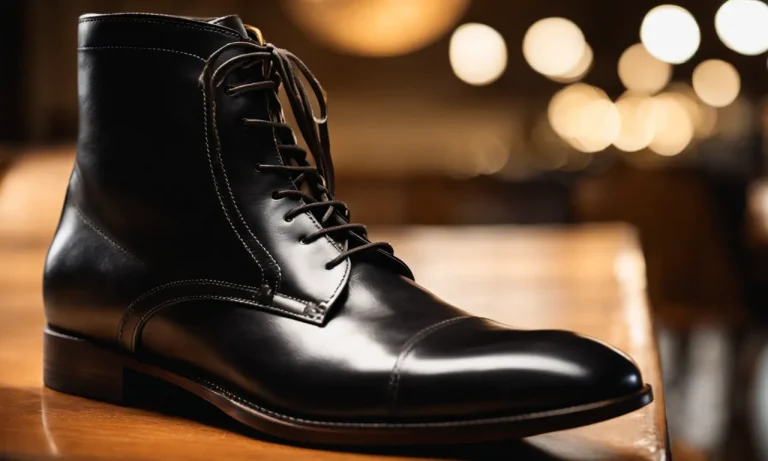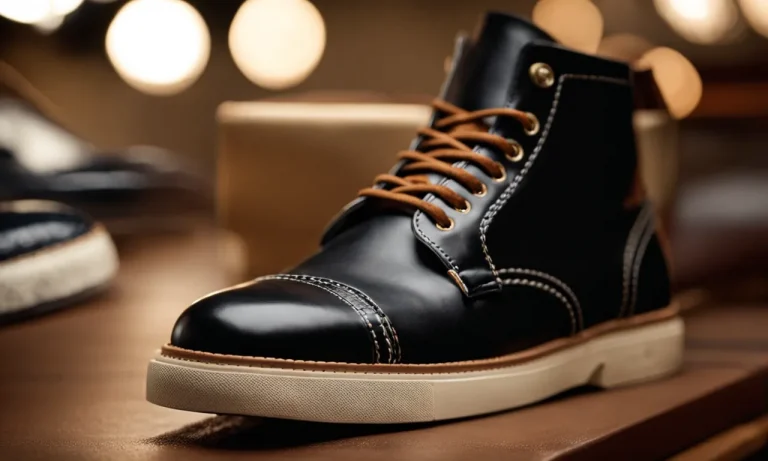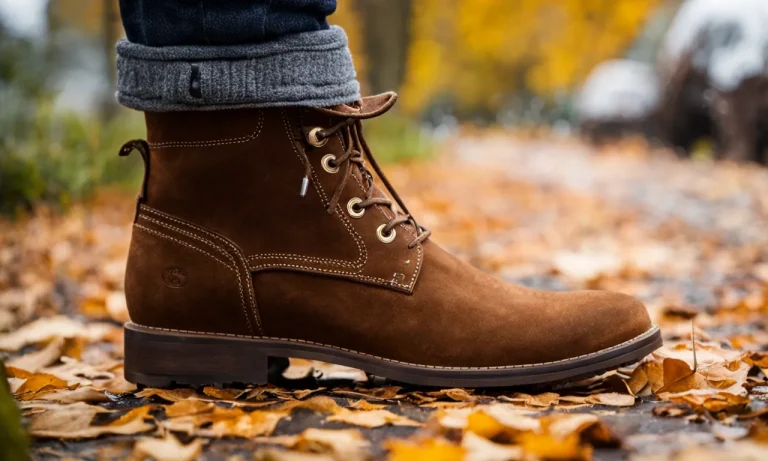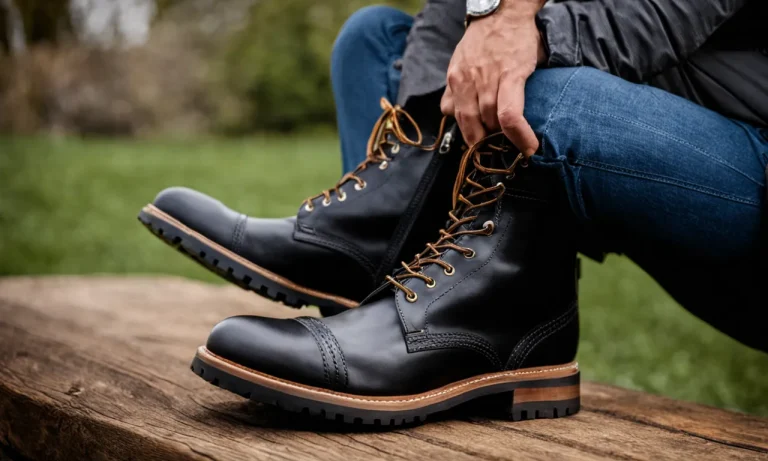Are you tired of guessing whether that cute pair of sneakers in the kids section will fit? Confused about women’s versus youth shoe sizes and how they compare? You’re not alone – converting between women’s and youth shoe sizes can be surprisingly tricky.
If you’re short on time, here’s the quick answer: women’s sizes are generally 1.5-2 sizes larger than the equivalent youth size. So if you wear a women’s size 8, you would wear around a youth size 6.
In this detailed guide, we’ll cover everything you need to know about converting shoe sizes for women, teens, and kids. You’ll learn key facts about sizing scales, how to measure foot size properly, size charts from top brands, and tips for getting the perfect fit when shopping.
The Basics: Key Facts About Women’s vs Youth Sizing
Women’s sizing uses larger numbers than youth sizes
When it comes to shoe sizes, women’s sizing typically uses larger numbers compared to youth sizes. This means that a women’s size 7, for example, will be larger than a youth size 7. The reason for this difference lies in the development of feet as individuals grow older.
As people transition from childhood to adulthood, their feet tend to become larger and wider to accommodate for their growth.
👉 Did you know? The average shoe size for women in the United States is around a 8.5, while the average youth shoe size is around a 2.
There is no standard conversion between scales
One important thing to note is that there is no standard conversion between women’s and youth shoe sizes. This means that a specific size in one scale does not directly correspond to the same size in the other scale.
It’s crucial to keep this in mind when shopping for shoes, as relying on assumptions or guesswork could lead to ill-fitting footwear.
👉 Tip: To find the right fit, it’s always recommended to consult the specific size charts provided by shoe manufacturers or retailers. These charts can help guide you in determining the appropriate size in either women’s or youth sizing.
Proper measurement is important for accuracy
To ensure accuracy when determining your shoe size in either women’s or youth sizing, it’s essential to take proper measurements of your feet. This can be done using a foot measuring tool or by using a ruler or tape measure.
👉 Pro Tip: Stand with your feet flat on the ground and measure the length of your foot from your heel to the tip of your longest toe. Be sure to measure both feet, as there can be slight variations in size between the left and right foot.
Use the measurements obtained to refer to size charts provided by shoe manufacturers or retailers.
Understanding the differences between women’s and youth shoe sizing can help ensure a better fit when shopping for shoes. Remember to rely on accurate measurements and consult size charts provided by trusted sources to find the perfect pair. Happy shoe shopping!
Measuring Feet: Techniques for Adults vs Kids
Standing with weight evenly distributed
When it comes to measuring feet, the first step is ensuring that the person is standing with their weight evenly distributed. This is important for both adults and kids. By standing correctly, it helps to provide accurate measurements for shoe sizes.
It is recommended to stand straight with shoulders relaxed and feet parallel to each other.
Using a Brannock device for adults
For adults, one common technique to measure feet is by using a Brannock device. This tool is widely used in shoe stores and provides precise measurements for length and width. The individual can place their foot on the device and adjust the sliders until it fits comfortably.
The device then displays the shoe size in both U.S. and European measurements. Many shoe retailers also offer online guides to measure feet at home using a printable Brannock device template.
Sitting with heel against wall for kids
Measuring the feet of kids requires a slightly different approach. Instead of standing, kids should sit with their heel against a wall. This helps to ensure that their foot is in a stable position for accurate measurements.
It is important to note that children’s feet can grow quickly, so it is recommended to measure their feet frequently to ensure proper fit and comfort.
Tracing outlines of feet
Another technique commonly used for both adults and kids is tracing the outlines of the feet. This method allows for a visual representation of the foot shape, which can be helpful when selecting shoes that provide the right amount of support and comfort.
To trace the foot, place a piece of paper on the floor and have the person step on it. Then, using a pen or pencil, carefully trace around the foot. This tracing can then be measured to determine the appropriate shoe size.
Considering factors like time of day
When measuring feet, it is important to consider factors that can affect the size, such as the time of day. Feet tend to swell slightly throughout the day, so it is recommended to measure them in the afternoon or evening to ensure a proper fit.
Additionally, it is essential to consider the type of shoes the person will be wearing. Different shoe styles may require slightly different measurements to ensure a comfortable fit.
Size Conversion Charts: Women’s to Youth
Standard US shoe size chart
When it comes to converting women’s shoe sizes to youth shoe sizes, it’s important to have a reliable size conversion chart. The standard US shoe size chart is a helpful tool that can assist you in finding the right fit for your feet.
This chart provides a comparison between women’s sizes and youth sizes, allowing you to determine the appropriate youth shoe size based on your women’s shoe size. It’s worth noting that the conversion can vary slightly between different shoe brands, so it’s always a good idea to consult the specific brand’s size chart if available.
International (EU) shoe size conversion
If you’re looking to convert women’s shoe sizes to youth sizes with an international perspective, the European (EU) shoe size conversion chart is a valuable resource. The EU sizing system is widely used around the world and provides a unified approach to shoe sizing.
By referring to this chart, you can easily determine the equivalent youth size for a given women’s shoe size. For example, if you wear a women’s size 8 in the US, you would typically wear a youth size 6 in the EU sizing system.
Keep in mind that there may be slight variations in conversion between different countries, so it’s always a good idea to double-check with the specific country’s size chart if possible.
Brand-specific sizing for popular shoe companies
Many popular shoe companies have their own size conversion charts that cater to their brand-specific sizing. For instance, Nike, Adidas, and Puma all provide detailed size charts on their websites that allow you to convert women’s shoe sizes to youth sizes for their respective brands.
These charts take into account the unique sizing characteristics of each brand, ensuring a more accurate conversion. It’s important to note that these brand-specific charts may differ from the standard US or international conversion charts, so it’s always recommended to consult the brand’s chart for the most accurate sizing information.
When using size conversion charts, it’s crucial to consider factors such as foot width and shape, as well as any specific fit recommendations provided by the brand. It’s also worth noting that different shoe styles may fit differently, so it’s always a good idea to try on the shoes or read customer reviews before making a purchase.
Tips for Finding the Right Fit
Try both sizes when between youth sizes
When it comes to finding the perfect fit for women’s shoes, it can sometimes be challenging, especially when you’re in between youth sizes. In this case, it’s always a good idea to try both sizes to see which one feels more comfortable.
Every shoe brand has its own sizing chart, and the fit can vary, so don’t be afraid to experiment and compare. Remember, finding the right fit is crucial for your comfort and overall foot health.
Focus on length over width for growing kids
For parents looking to buy shoes for their growing children, it’s important to prioritize length over width. Children’s feet tend to grow quickly, and it’s crucial to allow room for growth. While width is still important for comfort, a shoe that is too short can cause discomfort and potentially hinder proper foot development.
Remember to measure your child’s feet regularly and choose shoes that leave about half an inch of space between the longest toe and the end of the shoe.
Consider style and purpose (casual vs athletic)
When it comes to choosing the right shoe size, it’s essential to consider both style and purpose. Different shoe styles and purposes may have slight variations in fit. For example, athletic shoes may have different sizing requirements compared to casual shoes.
It’s always a good idea to read reviews or consult the brand’s website for specific fitting recommendations. Additionally, trying on shoes in-store or ordering from retailers with flexible return policies can help ensure you find the perfect fit for your needs.
Shop late in the day for most accuracy
Believe it or not, the time of day can actually impact the accuracy of shoe sizing. Feet tend to swell slightly throughout the day due to various factors such as walking and temperature changes. To ensure the most accurate fit, it’s recommended to go shoe shopping later in the day when your feet are at their largest.
This way, you can avoid buying shoes that may fit perfectly in the morning but become uncomfortable by the end of the day. Keep in mind that this tip applies to both women and children’s shoes.
Conclusion
Figuring out women’s versus youth shoe sizes can be a headache, but by understanding sizing scales, proper measurement techniques, size charts, and fit tips, you can take the guesswork out of shopping. Focus on precise foot measurements and don’t rely on conversions alone.
With practice, you’ll be able to confidently shop kids’ or women’s sections knowing you’ll walk away with the perfect pair!






